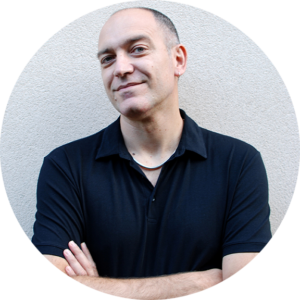Digital inclusion: a matter of the design of activities
Article
When talking about digital youth work, some people would immediately focus on the tools: which video conferencing app, which whiteboard etc. works better than the rest.
But when designing youth work activities, before choosing which exercise or game or dynamic you want to offer the group, you normally consider the overall aims, the general purposes and the content of the various sessions.
We will now provide some specific guidance on how your youth work activities can be designed to allow inclusive interactions in digital environments.
We have to keep in mind that these interactions will probably be fewer compared to in-person ones and that every space or connection has to be created, offered, considered from the beginning, in order to be at the disposal of our participants. For this reason, it would be good to plan the use of second screen spaces.
This practice comes from the spontaneous idea of watching some tv or online show, and simultaneously commenting on it together on social media circuits (creating or following dedicated hashtags) or in closed groups (such as Telegram or WhatsApp).
Some more up-to-date tv shows already incorporate this interaction in their programmes, and many streaming platforms are now introducing the same system to their services, allowing their customers to watch and comment on streaming content together in smaller or bigger groups.
Therefore, we really should consider using second screen spaces when watching a movie together online, and learn from that experience how to generally incorporate this level of interaction into our digital activities, to allow for another kind of participation: such as that which might happen informally in-person, using body language, smiles, low voice jokes with your neighbor etc.
As with everything in digital environments, this has to be planned and foreseen; it can be done in many ways, from using the internal chat function which many video call platforms offer, to setting up a dedicated space, such as the Discord platform. It is only at this stage, after deciding to incorporate this aspect, that one should wonder about the tools and choose the one which would facilitate most participation amongst participants, allowing all of them to be involved.
More common – even if not dedicated – platforms could be used: a WhatsApp group or a Messenger chat would do, if nothing better is available. This would mean knowing in advance which devices our participants are using, what kind of connections they might have, and any kind of special needs connected with different abilities, which it might be necessary to take into account.
Asking about special needs in advance, for instance, could help you design interaction based not only on visual content, which is normally predominant in online environments, but to consider also including audio and listening-based activities, or to invite everybody to write and use textual interaction more, for instance through second screen spaces, as advised before.
On the other hand, visual content could be used as a side support when text or spoken language does not meet every participant’s needs: there are so many possible activities that are waiting to be explored, from using and asking to use background images with some creativity, to drawing something or taking pictures of some objects which participants selected and adjusted – painted – dressed up etc, and then use these drawings or pictures as personal avatars.
This could also allow participants who, for whatever reason, would not turn their cameras on while connected, a level of personal presence.
This can have a number of reasons, from not feeling comfortable sharing their personal appearance, to an unwillingness to show the room or house where they are, for instance to avoid comparison with other participants’ houses, and so on.
In any case, the digital divide will have an impact on the potential inclusion of participants; research shows that about 10% of youngsters cannot properly connect to online activities. This is why we should always consider the digital divide when designing activities in online environments.
Moreover, when not forced by a global pandemic, online activities are not intended to be online-only, so a group meeting in person can lead to some group activities to be carried out online, and then to more in- person meetings to share the results of this work, and so on.
Another possible way of tackling the digital divide is teaching and learning about the technologies allowing us to be online: repairing and reusing older computers or smartphones is either an environmentally-friendly attitude, a way of saving some money, or a very interesting field of possible youth work activities – the makers activities, where you can actually make, or re-make, some tools that you are going to use to access digital environments.
Maker spaces are growing all over Europe, either as grassroots, self-managed services or as public spaces, sometimes directly connected to youth clubs.
Talking about the group, numbers are very relevant when designing online activities: it is better to go for smaller groups, up to a maximum of 15-20 people, and to include as many smaller group (3-4 people) activities as possible, to promote more direct interaction among participants. It would be good to have a team of 2-3 people, so that someone could always take care of the technical support and backstage preparations, while others are delivering the designed sessions to the group. You can also decide to have a digital facilitator in your team, and put him/her in charge of all the technical aspects, but sharing roles and responsibilities could be a good example of everybody being responsible for what happens in digital environments.

Timewise, it is clear that you cannot keep most of the youngsters (or anyone else) watching a screen for a long time: so in order to be more inclusive, your activities should last no more than 40-45 minutes of screen time, after which there should be a break inviting everybody to leave the screen, stand up, have a little walk around, in a word be back in their bodies for a while and take care of themselves, before getting back online. The whole activity should last no more than about 2 hours, then longer breaks or stopping for meals would be good.
About the author

Michele Di Paola
You can find me hangin' out at the crossing of liberal arts and digital technologies. That's my spot, where I enjoy working, learning and having fun using all kinds of human experiences.


